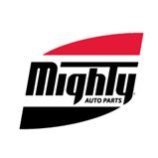-
Welcome to Auto Parts Forum
Whether you are a veteran automotive parts guru or just someone looking for some quick auto parts advice, register today and start a new topic in our forum. Registration is free and you can even sign up with social network platforms such as Facebook, X, and LinkedIn.
-
Similar Topics
-
By Mighty Auto Parts
The post
link hidden, please login to view appeared first on link hidden, please login to view. When performing engine maintenance, the coolant is seldom considered. While the freeze factor is usually the first consideration at the start of winter, few consider the corrosive inhibitors and lubricants that become depleted, promoting water pump failure. In addition, the accumulation of engine and radiator deposits can affect engine cooling. Coolant exchangers are highly recommended […]
The post
link hidden, please login to view appeared first on link hidden, please login to view.
link hidden, please login to view -
-
By Clifford Auto Parts
When it comes to keeping your vehicle running smoothly and efficiently, investing in the right auto parts is crucial. Whether you're a car enthusiast, a professional mechanic, or simply a vehicle owner who takes pride in proper maintenance, the quality of your parts can make all the difference. At Clifford Auto Parts, we understand the importance of using high-quality automotive components, and that's why we're committed to providing the best products and services to our customers.
The Importance of Using High-Quality Auto Parts
Imagine this: You're driving down the highway, and suddenly your car begins to sputter and lose power. More often than not, this is caused by failing or low-quality parts that just couldn't handle the wear and tear. By choosing high-quality, durable parts, you’re not just maintaining your vehicle; you’re investing in its performance and longevity.
Here’s why using premium auto parts is essential:
✓ Improved Fuel Efficiency: High-quality Engine Control Modules (ECMs) and Powertrain Control Modules (PCMs) ensure that your engine operates at optimal levels, helping to maintain fuel efficiency and reduce emissions.
✓ Extended Vehicle Lifespan: Investing in quality parts reduces the risk of sudden breakdowns and costly repairs. Regularly replacing worn-out components with durable ones can extend the life of your vehicle.
✓ Enhanced Safety: Faulty parts can compromise the safety of your vehicle. By using reliable components from trusted suppliers like Clifford Auto Parts, you ensure your car remains safe on the road.
Why Choose Clifford Auto Parts?
At Clifford Auto Parts, we specialize in providing a wide range of automotive components, including:
Engine Control Modules (ECMs) Powertrain Control Modules (PCMs) Transmission Control Modules (TCMs) We cater to major brands like Chevrolet, Dodge, Ford, GMC, and Chrysler, and many more. ensuring that you get the exact parts you need for your vehicle. Here’s what sets us apart:
1. Uncompromised Quality
We understand that your vehicle deserves the best. All of our parts are rigorously tested to meet or exceed OEM standards. When you purchase from Clifford Auto Parts, you’re not just buying a product; you’re investing in quality that you can trust.
2. Fast & Free Shipping Across the U.S.
We know how important it is to get your car back on the road quickly. That’s why we offer fast, reliable shipping throughout the United States, free of charge. Order today, and we’ll have your parts at your doorstep in no time.
3. Lifetime Warranty on All Parts
We stand behind the quality of our products, which is why we offer a lifetime warranty on all parts. If something goes wrong, we’ve got you covered.
4. Dedicated Customer Support
Not sure which part you need? Our experienced team is here to assist you. Whether you have questions about compatibility or need help troubleshooting an issue, we’re just a call away.
Top-Selling Products at Clifford Auto Parts
Here’s a look at some of our best-selling products:
🚗 Chevrolet Engine Control Modules (ECM)
Ensure your Chevy runs smoothly with our top-rated ECMs, designed to optimize engine performance and fuel efficiency.
🚚 Dodge Powertrain Control Modules (PCM)
Experience smooth gear shifts and improved performance with our Dodge PCMs, specifically designed to enhance the driving experience.
🚙 Ford Transmission Control Modules (TCM)
Our Ford TCMs are engineered to provide precise control over your vehicle’s transmission, ensuring reliability and longevity.
Customer Testimonials
"Clifford Auto Parts has been a game-changer for me. The lifetime warranty and free shipping made it an easy decision to choose them over other suppliers. My car's performance has never been better!" – David S., New York
"I was impressed by the fast shipping and the quality of the parts I received. The customer support team was very helpful in guiding me to the right ECM for my Dodge Ram." – Sarah P., California
Join the Clifford Auto Parts Community
Are you tired of dealing with subpar auto parts that leave you stranded on the side of the road? It's time to make the switch to Clifford Auto Parts. Our parts are designed to keep your vehicle performing at its best, ensuring you get the most out of every drive.
Visit our website today at
link hidden, please login to view to browse our full range of automotive components.
Engage with Us We’re always here to help and love connecting with automotive enthusiasts. If you have any questions or need advice on choosing the right parts for your vehicle, don’t hesitate to reach out to us. Let's keep your car running smoothly!
🔧 Clifford Auto Parts – Driving quality, performance, and satisfaction.





Recommended Posts
Join the conversation
You can post now and register later. If you have an account, sign in now to post with your account.
Note: Your post will require moderator approval before it will be visible.